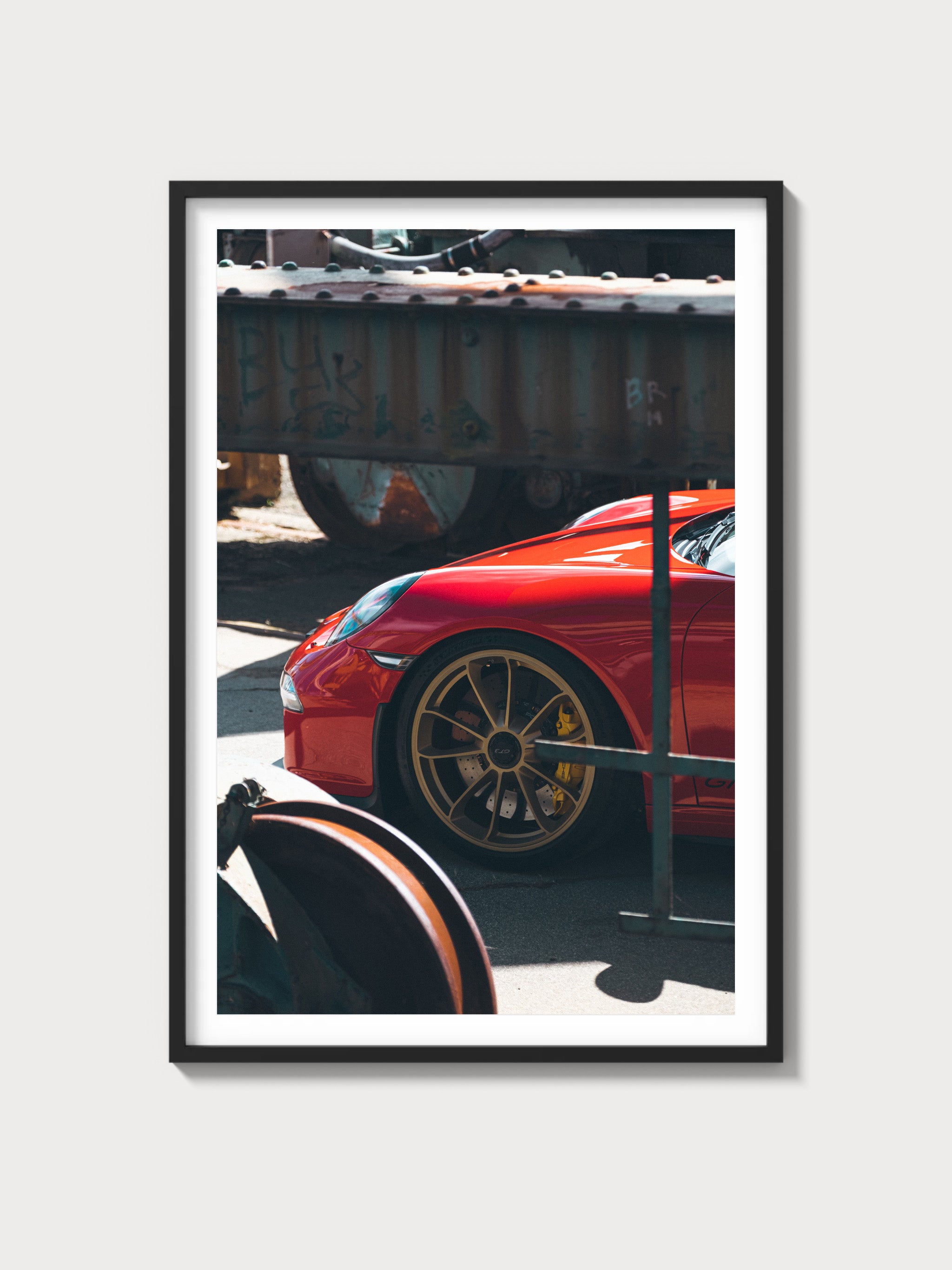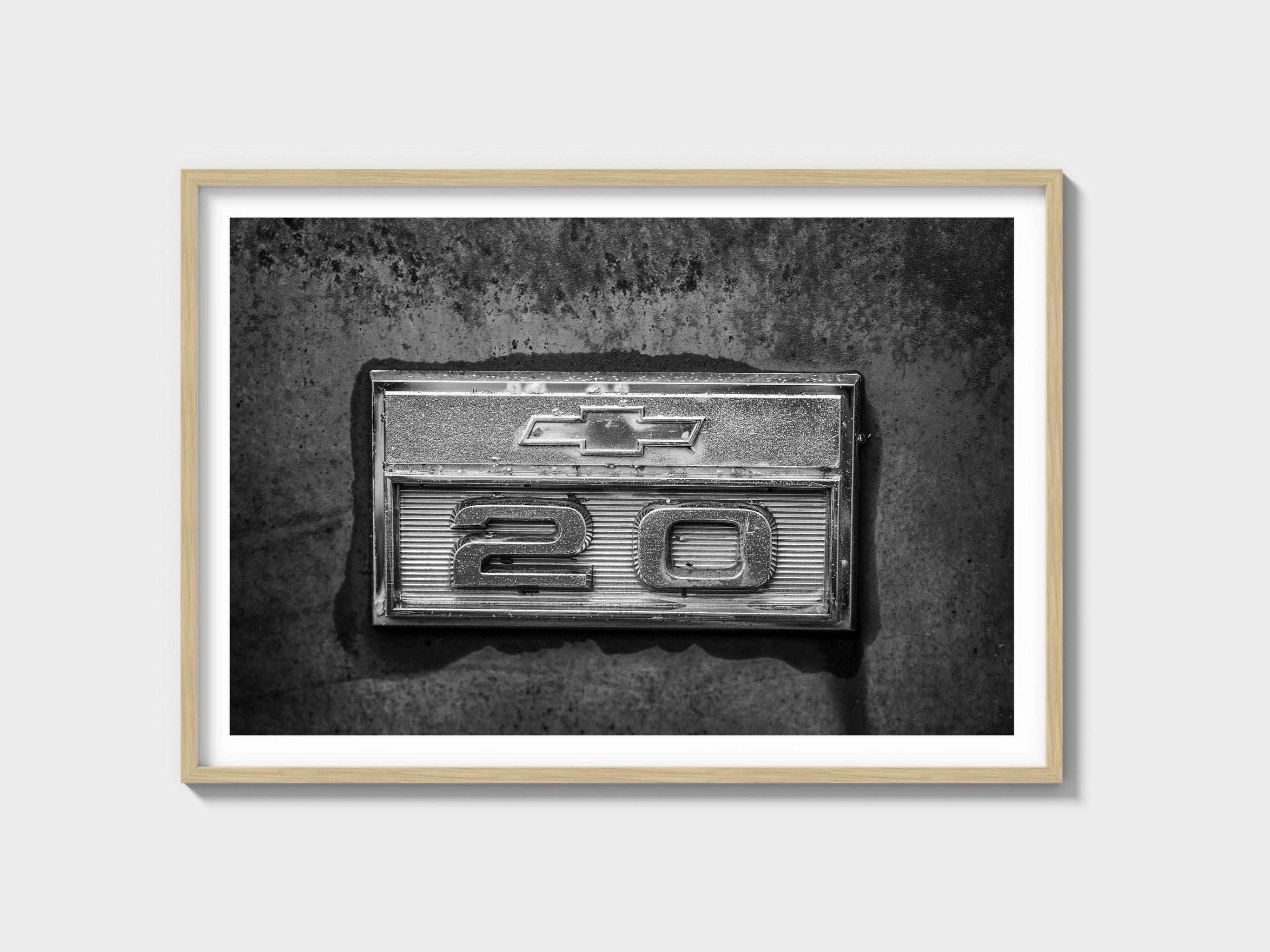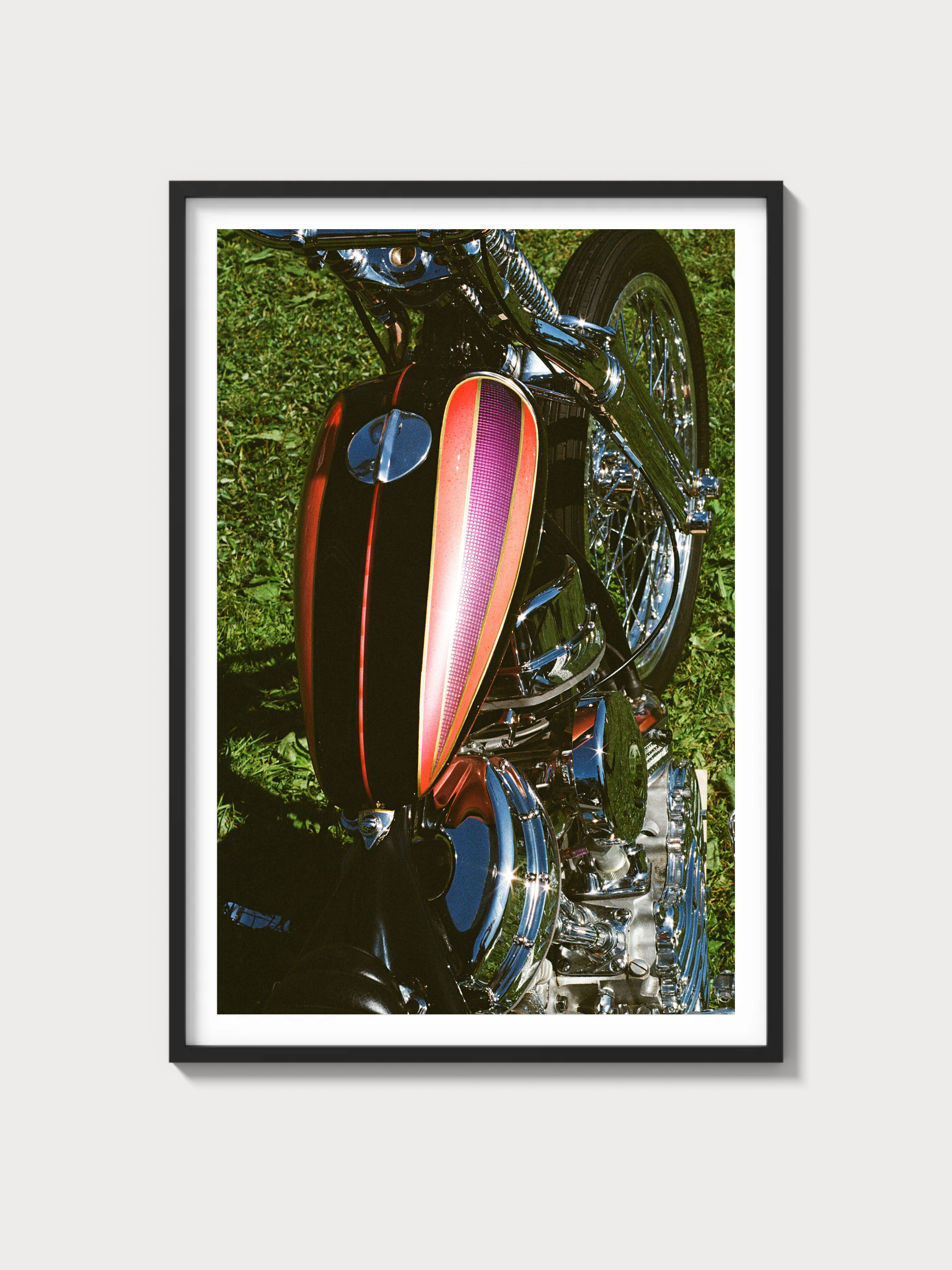2015–2022 Chevrolet Colorado Z71 — The Sweet Spot of the Second Gen
Historical Context and Development Background
Chevrolet’s second-generation Colorado arrived for the 2015 model year, answering a U.S. market that had largely vacated the mid-size pickup segment. The Z71 sat near the top of the lineup as the off-road-biased trim, positioned below the later hardcore ZR2 but above the work-focused WT and comfort-leaning LT. Its mission: deliver everyday civility with credible trail capability via off-road suspension tuning, all-terrain tires, skid plates, and an automatic locking rear differential (G80).
Under the skin, the Colorado rode on GM’s global mid-size truck architecture, adapted for North America with specific crash, emissions, and NVH requirements. Early trucks paired either a 2.5-liter four-cylinder or 3.6-liter V6 with a six-speed automatic; a 2.8-liter Duramax diesel joined for 2016. For 2017, the V6 received GM’s updated LGZ variant and an 8-speed automatic (8L45), improving response and efficiency. The Z71 package remained a coherent recipe throughout: monotube shocks (commonly supplied by Rancho), hill-descent control on 4x4 models, recovery hooks, and protective hardware.
On the corporate scorecard, the Colorado helped restore Chevrolet’s presence against entrenched rivals: Toyota Tacoma TRD Off-Road, Nissan Frontier Pro-4X, and later the reintroduced Ford Ranger. The platform also served as a springboard for motorsport efforts—most notably the ZR2 in desert racing—while the Z71 became the volume off-road spec favored by buyers wanting capability without the ZR2’s wider stance and extreme suspension.
Engines and Technical Specifications
The Z71 could be ordered with three distinct powertrains during its run. The data below reflects factory specifications as offered in North America.
| Engine | Configuration | Displacement | Horsepower | Induction | Redline | Fuel System | Compression | Bore x Stroke |
|---|---|---|---|---|---|---|---|---|
| LCV 2.5L I4 (gas) | DOHC 16-valve inline-4 | 2,457 cc | 200 hp @ 6,300 rpm; 191 lb-ft @ 4,400 rpm | Naturally aspirated | Not published (tach indicates ~6,500 rpm) | Direct injection | 11.3:1 | 88.0 mm x 100.0 mm |
| LFX 3.6L V6 (2015–2016) | DOHC 24-valve V6 | 3,564 cc | 305 hp @ 6,800 rpm; 269 lb-ft @ 4,000 rpm | Naturally aspirated | Not published (tach indicates ~7,000 rpm) | Direct injection | 11.3:1 | 94.0 mm x 85.6 mm |
| LGZ 3.6L V6 (2017–2022) | DOHC 24-valve V6 with AFM | 3,564 cc | 308 hp @ 6,800 rpm; 275 lb-ft @ 4,000 rpm | Naturally aspirated | Not published (tach indicates ~7,000 rpm) | Direct injection | 11.5:1 | 94.0 mm x 85.6 mm |
| LWN 2.8L Duramax I4 (diesel) | DOHC 16-valve inline-4 | 2,776 cc | 181 hp @ 3,400 rpm; 369 lb-ft @ 2,000 rpm | Turbocharged, intercooler | Diesel governor (no conventional redline) | Common-rail direct injection | 16.0:1 | 94.0 mm x 100.0 mm |
Driving Experience and Handling Dynamics
The Z71 takes the Colorado’s balanced road manners and adds useful rough-road resilience. On pavement, the monotube shocks and slightly firmer damping maintain good vertical control without the choppiness of many leaf-sprung pickups. Steering is electrically assisted, light at low speed, and accurate enough for confident lane placement. The off-road package’s all-terrain tires add a touch more tread squirm, but the Z71 never feels wayward at highway pace.
Powertrain character varies meaningfully by engine. The 3.6-liter V6 is the enthusiast’s choice for outright pace and a broader operating range; the 2017–2022 LGZ paired to the 8L45 automatic is particularly responsive, with shorter overall gearing and crisper part-throttle shifts than the earlier six-speed. The 2.8 Duramax diesel trades top-end urgency for immense low-rpm torque—effortless on grades and notably composed with a trailer in tow. GM’s G80 automatic locking differential discreetly engages when a rear wheel spins, aiding traction on loose surfaces without driver intervention.
Off-road, the Z71’s hill-descent control, skid plates, and extra ground clearance extend the Colorado’s reach, though the suspension geometry and tires remain oriented to multipurpose use. For deep ruts, high-speed whoops, or serious articulation, the ZR2 is the step beyond; the Z71, however, strikes a compelling balance for mixed on/off-road life.
Full Performance Specifications
Independent instrumented tests across the run show consistent performance, with a notable step forward when the V6 gained the 8-speed automatic.
| Configuration | 0–60 mph | Quarter-mile | Top speed | Curb weight | Layout | Brakes | Suspension | Gearbox |
|---|---|---|---|---|---|---|---|---|
| Z71 4x4, 3.6L V6 (2015–2016) | ~7.4–7.6 s | ~15.8–16.0 s @ ~89–91 mph | Governor-limited ~98 mph | ~4,400–4,600 lb | Front-engine, 4WD | Front discs, rear drums; 4-wheel ABS | IFS coilover/leaf-spring live axle; monotube shocks | 6-speed automatic (6L50) |
| Z71 4x4, 3.6L V6 (2017–2022) | ~6.3–6.8 s | ~15.0–15.5 s @ ~92–95 mph | Governor-limited ~98 mph | ~4,400–4,650 lb | Front-engine, 4WD | Front discs, rear drums; 4-wheel ABS | IFS coilover/leaf-spring live axle; monotube shocks | 8-speed automatic (8L45) |
| Z71 4x4, 2.8L Duramax (2016–2022) | ~9.0–9.5 s | ~16.8–17.2 s @ ~78–80 mph | Governor-limited ~98 mph | ~4,650–4,900 lb | Front-engine, 4WD | Front discs, rear drums; 4-wheel ABS | IFS coilover/leaf-spring live axle; monotube shocks | 6-speed automatic (6L50) |
Notes: Published instrumented results vary with cab/bed configuration, axle ratio, tire, altitude, and test procedure. The Z71’s top speed is electronically limited.
Variants and Special Editions within the Z71 Umbrella
Beyond the core cab/bed and drivetrain choices (Extended Cab or Crew Cab; Short or Long Box; 2WD or 4x4), Chevrolet offered appearance and equipment packages built off the Z71.
| Trim/Edition | Years Offered | Key Differences | Drivetrain Availability | Production Numbers | Market Notes |
|---|---|---|---|---|---|
| Z71 (standard) | 2015–2022 | Off-road suspension (monotube shocks), G80 auto-locking rear diff, hill-descent control (4x4), all-terrain tires, skid plates, recovery hooks, unique interior trim | 2WD or 4x4; 2.5 I4, 3.6 V6, or 2.8 Duramax (diesel from 2016) | Not publicly disclosed | Core Z71 specification |
| Z71 Midnight Edition | Selected years within 2016–2020 range | Black exterior treatment, body-color grille, black 17-in wheels, darkened badging, spray-in bedliner | Primarily 4x4; gasoline or diesel | Not publicly disclosed | Dealer and model-year dependent |
| Z71 Trail Boss Package | Selected years within 2015–2018 range | Black sport bar with LED off-road lights, Goodyear Wrangler DuraTrac tires, side steps, unique wheels and decals | Mostly 4x4; gasoline or diesel | Not publicly disclosed | Package availability varied by region |
| Centennial Edition (Z71-based) | 2018 | Centennial Blue paint, heritage bowtie emblems, special badges and trim celebrating Chevy Trucks’ 100 years | Available with V6 or diesel | Not publicly disclosed | Commemorative appearance package |
Ownership Notes: What Enthusiasts Should Know
- Maintenance intervals: GM’s oil-life monitor governs oil changes on gas engines (dexos1-approved oil). The 2.8 Duramax uses diesel-rated oil (dexos2); Diesel Exhaust Fluid (DEF) is required and consumed faster with heavy towing.
- Timing components: Gas engines (2.5, 3.6) use timing chains. The 2.8 Duramax uses a timing belt with a factory replacement interval typically specified at 150,000 miles (or time-based), so confirm documentation on higher-mile trucks.
- Transmissions: 2015–2016 V6 used the 6L50 six-speed; 2017+ V6 switched to the 8L45 eight-speed. The diesel pairs with the 6L50. Some owners reported torque-converter shudder in certain 8L45/8L90 family applications; GM issued updated fluid/service procedures. Verify the latest TSB-compliant service has been performed.
- Brakes and consumables: Front discs/rear drums are durable and inexpensive to service. Tire choices materially affect ride, noise, and steering feel; the OE all-terrain spec is a good dual-purpose baseline.
- Parts availability: Excellent for routine items; diesel-specific components (NOx sensors, DEF heaters, DPF) are costlier. Body and interior parts are widely available due to shared use across Colorado/Canyon.
- Known issues/recalls to check: A steering-assist recall affected early 2015–2016 trucks (sudden loss of assist due to electrical connection); A/C condenser leaks have been reported on some GM trucks of this era; infotainment software updates address various minor bugs. Always run a VIN-specific recall check.
- Restoration difficulty: Low. These are modern, well-supported trucks; diesel emissions systems and the timing belt service add complexity on LWN-equipped trucks.
Cultural Relevance and Market Standing
The second-gen Colorado, including the Z71, re-legitimized the mid-size truck class and won significant accolades—most prominently Motor Trend’s Truck of the Year honors for its launch model year. The addition of the U.S.-market 2.8 Duramax broadened the appeal, and that engine earned a place on Wards 10 Best Engines. In enthusiast media the Z71 has been praised for its livability and real-world capability, often cited as the everyday choice versus the specialized ZR2.
Collector heat remains measured; these trucks are valued more for utility and configuration than for rarity. Documented sales in enthusiast-oriented venues have shown clean, low-mile Z71 V6 4x4s bringing strong money relative to mainstream retail, with diesel examples commanding a premium when maintenance is up to date. Options that tend to help: Crew Cab Short Box 4x4, 8-speed V6, desirable colors or special editions, and factory towing equipment.
Frequently Asked Questions
How does the Z71 differ from the ZR2?
The Z71 is an off-road-oriented trim with monotube shocks, all-terrain tires, skid plates, and the G80 locking rear differential. The ZR2 adds a wider track, unique bodywork, front and rear electronic lockers (depending on model), aggressive approach/departure angles, and Multimatic DSSV dampers. The Z71 is the more daily-driver-friendly choice with lower running costs.
Which engine is best?
For pace and simplicity, the 3.6L V6—especially 2017–2022 with the 8-speed—is the sweet spot. For torque, towing, and efficiency under load, the 2.8L Duramax is excellent, provided its timing-belt and emissions-system maintenance are current. The 2.5L I4 is adequate for lighter-duty use but uncommon on Z71 builds.
What are the towing capacities?
Properly equipped, V6 Z71 models are rated up to 7,000 lb; the 2.8 Duramax is rated up to 7,700 lb. The 2.5L gas four-cylinder is typically rated to 3,500 lb. Always confirm axle ratio, cooling, and hitch equipment on a specific truck.
What fuel economy should I expect?
EPA ratings when new varied by drivetrain. Typical figures: V6 4x4 around the high teens city and low-to-mid 20s highway; 2.8 Duramax around the low 20s city and upper 20s highway. Actual results depend on tire, load, gearing, terrain, and driving style.
Are there common problems?
Items to check include: 8-speed torque-converter shudder on some V6 trucks (verify updated fluid service), early steering-assist recall completion, A/C condenser integrity, and, on diesels, emissions components like NOx sensors or DEF heaters. Overall reliability is solid when serviced on schedule.
Does the Z71 have rear disc brakes?
Second-gen Colorado Z71 models of this era typically use front ventilated discs and rear drums with 4-wheel ABS. This setup is robust for towing and off-road use and keeps service costs down.
What should I look for in a used Z71?
Seek complete service records, evidence of transmission fluid updates on 8-speed V6 trucks, differential and transfer-case fluid changes on vehicles that towed or saw off-road use, and timing-belt documentation on diesels. Inspect underbody skid plates and frame rails for off-road impacts.
Key Specs Recap
| Item | Specification |
|---|---|
| Engines | 2.5L I4 (200 hp); 3.6L V6 (305–308 hp); 2.8L Duramax I4 diesel (181 hp, 369 lb-ft) |
| Transmissions | 6-speed automatic (6L50); 8-speed automatic (8L45 on 2017–2022 V6) |
| Drivetrain | RWD or 4x4; G80 auto-locking rear differential |
| Suspension | Front: independent coilover; Rear: leaf-spring live axle; Z71 monotube shocks |
| Brakes | Front discs, rear drums; 4-wheel ABS |
| Top Speed | Electronically limited (approx. 98 mph) |
| Curb Weight (typical) | ~4,100–4,900 lb depending on cab/bed, drivetrain, engine |
For the enthusiast who wants a mid-size pickup that can commute, tow credibly, and traverse a rutted fire road without drama, the second-generation Colorado Z71 remains a particularly well-judged package—made better if you know precisely which engine, gearbox, and package suit your use case.

















































